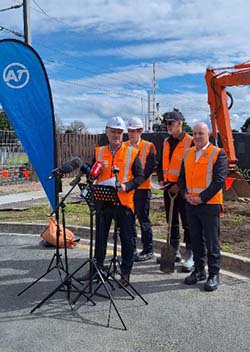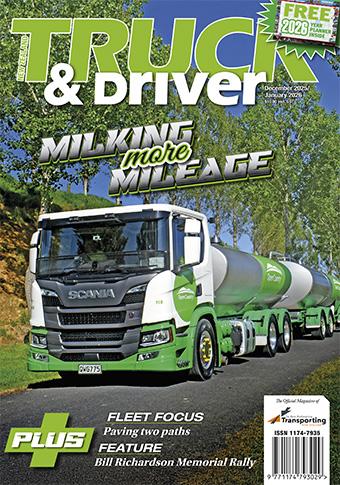
Level Crossing Replacements Start Delivery
Posted: 28-Aug-2025 |
A major project to replace rail level crossings in Takanini and Glen Innes with eight new bridges is starting delivery, Auckland Transport and KiwiRail say.
Pre-construction works start this week, with main construction of new bridges at Takanini, Te Mahia and Glen Innes stations starting during summer.
The project supports more frequent trains while improving safety, keeping traffic moving and enhancing urban areas. Level crossing removals are part of Auckland Transport and KiwiRail’s plan to be able to carry increasing numbers of people on quicker, even more frequent, easy train services during the 30 years after City Rail Link opens.
Between 2013 and 2025 a total of 1,242 level crossing collisions and near-miss incidents were recorded in Auckland. Of these, barrier arm collisions accounted for 68% of all events.
Auckland Council and the Government through NZTA have brought forward funding to allow the delivery of the Takanini and Glen Innes level crossing removal projects. AT is also planning how best to replace level crossings on the Western Line, to be ready to for more trains to support future passenger growth.
In addition to work starting on station bridges, essential work on the road bridges is underway. This includes property acquisition, geotechnical investigations, further developing designs of the new bridges, tendering for a construction contractor and further community engagement in the coming months.
Auckland Transport Chief Executive Dean Kimpton says a number of level crossings have been, or will be, removed to be ready for more frequent trains when City Rail Link opens. It means the average traffic wait time at a level crossing will be similar to an intersection with traffic lights.
“We’re now getting on with the next stage of level crossing removals in Takanini and Glen Innes to support future increases in train frequencies. People living near rail lines will find it safer and easier to get around their communities – whether they’re walking, biking, driving or catching the train.
“Auckland Transport has progressed from funding approval to breaking ground for the projects in just six months, there’s a lot of work to get done but people can now see things are happening.”
About 200 construction workers will be employed on the projects this year, with a similar number of construction jobs in the coming years when road bridges are being built.
“Minimising disruption to traffic, rail passengers and communities around the projects is a high priority. This includes a plan to minimise traffic impacts when City Rail Link opens and during construction, as well as doing work on the rail line when closures are already planned.
“Auckland Transport is working to massively increase public transport use to reduce congestion, improve access for Aucklanders and support the economy, getting more and more people on rail in the years that follow City Rail Link opening,” Mr Kimpton says.
KiwiRail’s Chief Metro and Capital Programme Officer David Gordon says the new bridges will improve safety for both those using the road and those on rail.
“Collisions and near misses at level crossings can take a huge toll on all those involved, including emergency services and train drivers,” he says.
“By replacing level crossings with bridges, we reduce congestion and remove the risk of people behaving unsafely at level crossings. The new bridges are a crucial investment that will provide Aucklanders with safer transport options.”
Eight new bridges will be built, allowing level crossings to be closed. Construction will be staged.



 + EQUIPMENT GUIDE - FREE
+ EQUIPMENT GUIDE - FREE
